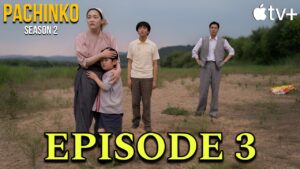K-dramas come and go, but Romance in the House is one of those dramas that leaves a subtle yet lasting impression. While the story might feel a bit dated in certain moments, its underlying message resonates clearly: no matter how long it takes, once you find your rhythm in life, everything will be fine.
As South Korea continues to evolve its views on family and societal norms, it’s fascinating to observe how these shifts get represented in mainstream entertainment. Romance in the House is a prime example of this trend, exploring families that don’t fit the traditional mold but still manage to find happiness and harmony. The show portrays the idea that the concept of family is changing, and it’s not necessary to conform to older standards of living to achieve the ultimate goal of a happy, loving family. Let’s dive into the key moments from the ending and explore the journey each character undergoes.
Table of Contents
How Did Moo-Jin Make His Fortune?

The big question looming over Romance in the House finally gets answered in the last episodes: how did Moo-Jin amass his wealth? True to K-drama style, the answer is packed with drama, action, and a touch of humor.
In episode 11, we learn that Moo-Jin’s path to financial success wasn’t smooth. Years ago, Moo-Jin was swindled by a real estate agent, losing a considerable amount of money. This scam left him in debt, which ultimately forced his wife Ae-Yeon to shut down her snack bar to pay off the loan sharks. But instead of giving up, Moo-Jin made a bold decision—he went to Thailand and spent 10 years tracking down the man who scammed him.
During his time in Thailand, Moo-Jin crossed paths with a wealthy woman whose daughter had also been scammed—this time in a marriage scam—by the same man who tricked Moo-Jin. The story takes a wild turn as Moo-Jin and the rich woman team up to bring the scammer to justice. After a typical action-packed showdown, they catch the scammer, and Moo-Jin hands him over to the wealthy woman. Grateful, she gives Moo-Jin a large sum of money—enough to pay off his debts and set him up for life.
This twist might seem convenient, but it’s a classic K-drama trope. Moo-Jin didn’t “earn” the money in the traditional sense; it fell into his lap after a series of extraordinary circumstances. The koi fish tattoo he gets after the ordeal serves as a reminder of the woman who changed his life. In many ways, the tattoo symbolizes both his luck and the scars of his journey.
Why Does Mi-Rae Face Trouble at Work?
No K-drama is complete without a bit of workplace drama, and Romance in the House delivers just that in its final episodes. Mi-Rae and Tae-Pyeong, who have been navigating their relationship while working in the same department, find themselves in a tricky situation when rumors about their romance start circulating in the office.
The tipping point comes when an anonymous online post accuses an office employee—Mi-Rae—of dating the CEO’s son. The post throws the entire workplace into chaos, as many employees initially side against Mi-Rae. However, Mi-Rae’s team soon realizes that she hasn’t done anything wrong, and they stand by her. This plotline highlights the pressures of office politics and how damaging rumors can be, especially for women in the workplace.
In the end, Mi-Rae’s situation takes a turn for the better. Tae-Pyeong decides to step away from his position at the company, admitting to his father that the corporate world isn’t for him. Instead, he returns to his passion for teaching Taekwondo to children, a role where he feels more fulfilled. Meanwhile, Mi-Rae earns a promotion, proving that she’s capable of thriving in her career despite the challenges.
What Happens to Hyeon-Jae?
Hyeon-Jae’s journey is perhaps the most emotional arc in Romance in the House. Throughout the series, he struggles with feelings of abandonment and inadequacy, having grown up feeling like an outsider in his own family. His father’s absence left a deep impact on him, and his mother Ae-Yeon’s protective nature made it difficult for him to pursue his own dreams.
In the final episodes, we see Hyeon-Jae confront his past and his family. Ae-Yeon apologizes to him for not considering his feelings when he was younger, explaining that she was trying to protect him from failure. She admits that she never doubted his abilities but was afraid he might follow in his father’s footsteps and struggle in the business world.
Hyeon-Jae’s redemption comes when he presents the app he’s been developing, proving that he’s serious about making something of himself. Ae-Yeon finally acknowledges his hard work, and Hyeon-Jae realizes that his father wasn’t belittling him by pushing him towards business classes; rather, he was trying to help him hone his skills. This revelation brings a sense of closure to Hyeon-Jae’s character, as he begins to trust in his abilities and reconcile with his family.
Do Mi-Rae and Tae-Pyeong Get Their Happy Ending?
One of the refreshing aspects of Romance in the House is that it doesn’t rely on the typical K-drama tropes of grand gestures and dramatic weddings to wrap up the story. Instead, Mi-Rae and Tae-Pyeong’s relationship progresses naturally, showing that they are committed to each other without needing to change their entire lives for the sake of a fairytale ending.
By the end of the show, Mi-Rae and Tae-Pyeong are in a stable, happy relationship, but they continue to live their separate lives and pursue their individual goals. It’s a realistic portrayal of love, emphasizing that relationships don’t have to be all-consuming to be successful. The two characters find a balance between their personal and professional lives, allowing their relationship to grow without sacrificing their independence.
What’s the Future for Ae-Yeon and Moo-Jin?
The relationship between Ae-Yeon and Moo-Jin is perhaps the most unconventional in the series, and the ending stays true to that tone. Although the two clearly still care for each other, Ae-Yeon decides that she wants to live independently. After years of being tied down by family responsibilities and financial struggles, she longs for the freedom to pursue her own dreams.
That doesn’t mean Moo-Jin is out of her life, though. The two maintain a close relationship, going on trips together and spending quality time with their family. Their relationship is defined by mutual respect and understanding, allowing them to support each other while maintaining their boundaries.
In many ways, Ae-Yeon’s decision reflects a growing trend in South Korean culture, where women are increasingly prioritizing their independence and personal fulfillment over traditional family roles. Romance in the House portrays this shift with grace, showing that a family doesn’t have to fit the old mold to be happy and harmonious.
At its core, Romance in the House is a story about family, love, and personal growth. The show challenges the traditional notions of what a family should look like, offering a more modern and realistic take on relationships. Each character undergoes significant development, learning to trust in themselves and each other while navigating the ups and downs of life.
The ending is satisfying without being overly dramatic, allowing the characters to find happiness in their own ways. Whether it’s Mi-Rae and Tae-Pyeong’s grounded romance, Hyeon-Jae’s journey to self-acceptance, or Ae-Yeon’s newfound independence, each storyline wraps up in a way that feels true to the show’s themes of personal growth and familial love.
Romance in the House may not have made waves when it first aired, but its message about the changing nature of family and relationships is one that will resonate with viewers for a long time.












